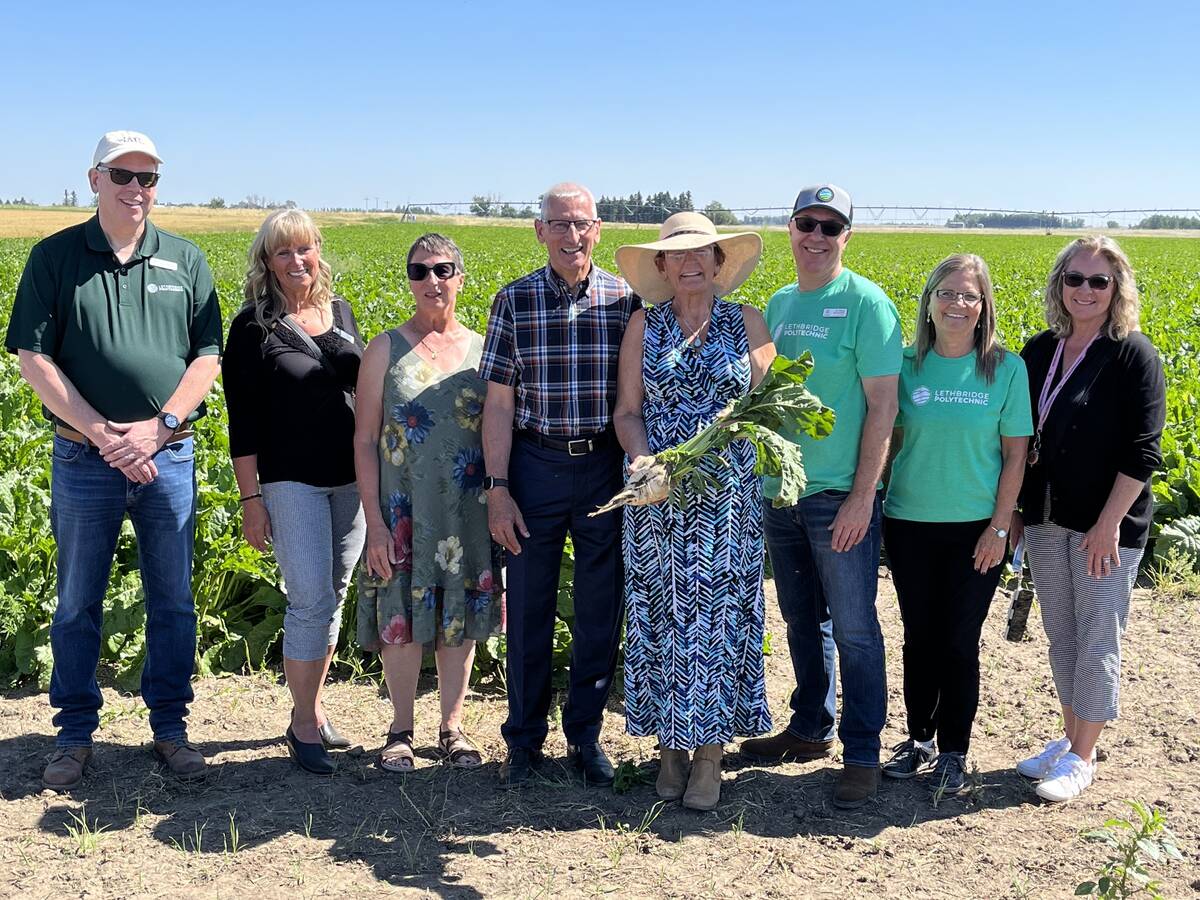Canadian livestock producers can celebrate new forage barley and oat varieties developed especially for the forage industry.
“For those in the industry, it’s quite exciting,” said Grant Lastiwka, a forage, grazing and beef specialist with Alberta Agriculture.
CDC Maverick is a new smooth-awned barley ideally suited for swath grazing, bale grazing and silage, he said.
It is similar to CDC Cowboy, a popular high yielding, drought tolerant silage barley, but with 10 percent more forage yield.
While Cowboy, released in 2008, was popular, it had rough awns so researchers began work on developing a smooth-awned forage barley.
Read Also

Lethbridge Polytechnic receives major donation
Multimillion-dollar donation by Hranac family aids Lethbridge Polytechnic’s research in integrated food production systems, irrigation science and post-harvest technology in Alberta
Lastiwka said rough-awned barleys are more of a concern for producers who swath graze the crop and use snow for water. The rough awns are more likely to get caught in the cow’s mouth.
“Snow does not have the ability to wash the mouth like a cow drinking water,” said Lastiwka of Olds, Alta.
He is excited to have varieties developed especially for the forage industry. Livestock producers previously made do with the best grain varieties, which were not always suitable for baling, grazing or turning into silage.
“It’s not so often you get breeders specifically designing something for us to address a forage issue,” he said.
Brian Rossnagel, a research scientist with the Crop Development Centre at the University of Saskatchewan, said they knew during the early stages of breeding that CDC Cowboy had excellent potential. Before Cowboy was even released, researchers began work on Maverick, a cross between Cowboy and smooth-awned varieties.
Both CDC Cowboy and CDC Maverick do well with fewer inputs and more drought-like conditions, said Rossnagel.
In an e-mail, Rossnagel said the Maverick name was chosen because “CDC Maverick was one smooth cowboy.”
CDC Haymaker, a new forage oat variety, is designed to replace CDC Baler. It has similar forage quality but yields about seven percent more forage. It is not designed for milling.
Because oat varieties are not registered, the new variety will be released, not registered.
Rossnagel said a benefit of the forage oat is the grain ripens while the rest of the plant is still green. This allows livestock producers to wait until the grain is more mature before swathing the crop.
“Stock do prefer oats being on the green side,” he said.
Producers will have to wait until 2014 before there will be enough seed grown and available through the pedigreed seed system. The increase and marketing of the barley will be handled through SeCan. Rossnagel is not sure how the sale of the new oat variety will be handled.
Rossnagel, who is now retired, and researchers Aaron Beattie and Bruce Coulman at the Crop Development Centre developed the new varieties.
















